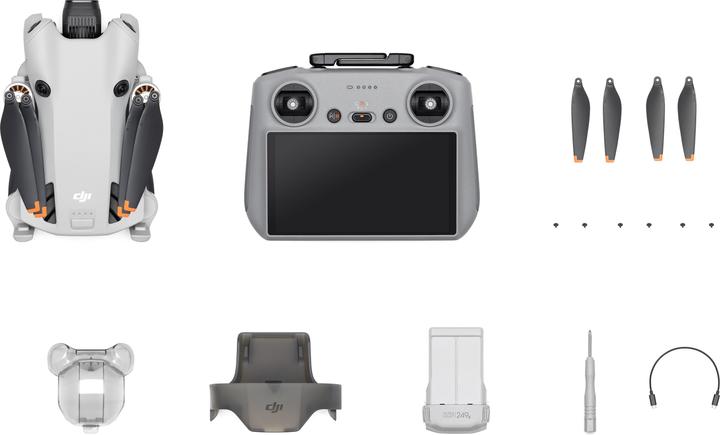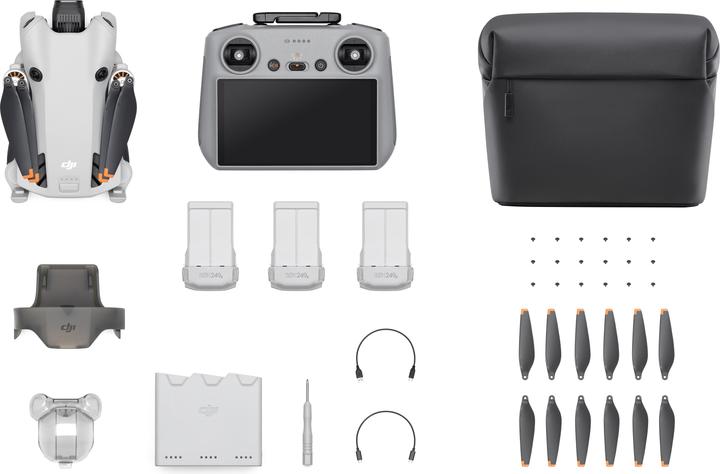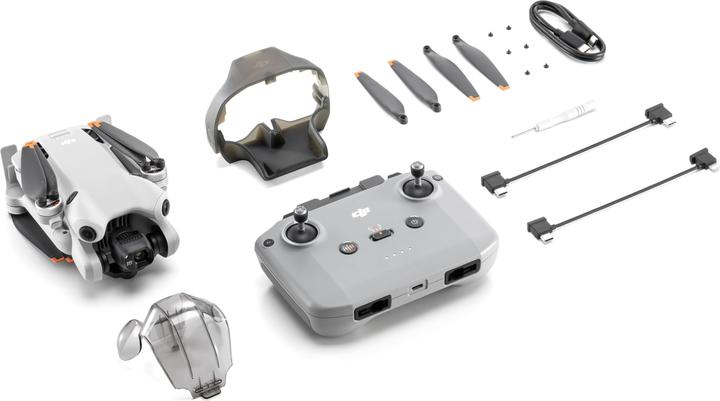
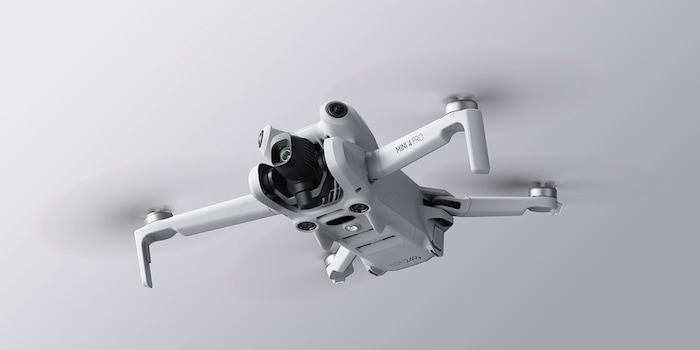
DJI Mini 4 Pro with all-round obstacle detection
DJI announces the Mini Pro 4. The drone has obstacle detection in all directions and can fly programmed routes precisely.
The Chinese drone manufacturer DJI presents the Mini 4 Pro. The innovations compared to the previous model are rather modest. The Mini 3 Pro was - contrary to the number in its name - the first Pro drone under 250 grams and significantly more powerful than all other DJI Mini models. It is still available.
Obstacle detection and flight programming
The Mini 4 Pro offers omnidirectional obstacle detection. The built-in sensors also detect obstacles from the side and above. The predecessor model only has sensors in the forwards, backwards and downwards directions. All other mini-drones have no obstacle detection at all, only a downward-facing sensor that enables automatic landing.
Also new in a mini drone: the "Waypoints" function. This allows you to programme a route on a map, which is then flown automatically. This allows you to fly the exact same route several times and seamlessly merge recordings from different times, for example.
More small improvements
The Mini 4 Pro uses the OcuSync 4 (O4) transmission protocol instead of OcuSync 3 like the Mini 3 Pro. However, the benefits of this are limited. In photo mode, the live image can display Full HD at 60 frames per second instead of 30, and the download speed is slightly higher. This also applies to the transmission range, but this does not give you any advantage: O3 already reaches much further than flying at visual distance would allow.
This change to O4 means that the Mini 4 Pro requires a different remote control than the Mini 3 Pro. It uses the DJI RC-2 controller, or RC-N2 in the version where the smartphone is used as a screen. For the Mini 3 Pro, it is the RC or RC-N1.
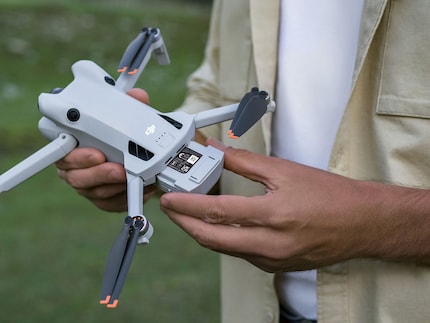
The Mini 4 Pro can record slow-motion videos at 100 FPS in 4K. In addition to the standard colour profile, it no longer uses D-Cinelike, but D-Log M, which is also used in the Air 3.
The internal memory has a capacity of 2 GB, compared to 1.25 GB for the Mini 3 Pro. Exposure brackets can be created from three shots with 48 megapixels. Continuous shooting with 48 megapixels is also possible.
DJI does not appear to have changed anything in the rest of the drone. The optics are the same, as is the sensor, as is the housing and therefore the flight characteristics. The Mini 4 Pro is expected to be available in three versions from the beginning of October: with two different remote controls, one with and one without a built-in screen. There is also a Fly More package with the luxury remote control and more accessories.
You can find the differences between the previous mini drones in this overview.
Cover picture: DJI
My interest in IT and writing landed me in tech journalism early on (2000). I want to know how we can use technology without being used. Outside of the office, I’m a keen musician who makes up for lacking talent with excessive enthusiasm.
From the latest iPhone to the return of 80s fashion. The editorial team will help you make sense of it all.
Show all